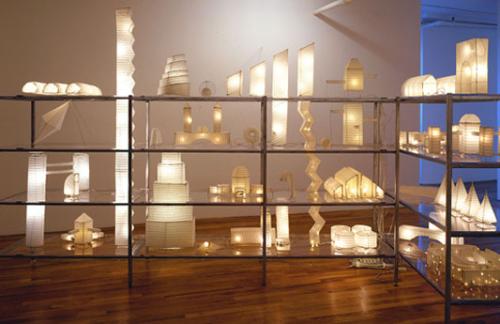inSite_05
dal 26/8/2005 al 13/11/2005
Segnalato da
Franz Ackermann
Francis Alys
Armando Andrade Tudela
Juan Araujo
Dora Longo Bahia
Gabriele Basilico
Mark Bradford
Carlos Bunga
Franklin Cassaro
Marcelo Cidade
Eduardo Consuegra
Rochelle Costi
Jose Davila
Eloisa Cartonera
Etcetera
Didier Fiuza Faustino
Carlos Garaicoa
Kendell Geers
Johan Grimonprez
Robert Gober
Felix Gonzalez-Torres
Cao Guimaraes
Jonathan Hernandez
Guillermo Kuitca
Geraldine Lanteri
Leonilson
Armin Linke
Jorge Macchi
Rubens Mano
Marepe
Rita McBride
Julie Merhetu
Rivane Neuenschwander
Henrik Olesen
Catherine Opie
Gabriel Orozco
Fernando Ortega
Damian Ortega
Marjetica Potrc
Pedro Cabrita Reis
Doris Salcedo
Dean Sameshima
Iran do Espirito Santo
Silke Schatz
Gregor Schneider
Melanie Smith
Sean Snyder
Thomas Struth
Taller Popular de Serigrafia
Ana Maria Tavares
Susan Turcot
Adriana Varejao
Hector Zamora
Norman Klein
Suely Rolnik
Adriano Pedrosa
Santiago Garcia Navarro
Julieta Gonzalez
Betti-Sue Hertz
Ana Elena Mallet
Carla Zaccagnini
26/8/2005
inSite_05
Two locations, San Diego
Art Practices in the Public Domain. Museum Exhibition/ Farsites/ Urban Crisis and Domestic Symptoms in Recent Contemporary Art

Museum Exhibition/ Farsites/ Urban Crisis and Domestic Symptoms in Recent Contemporary Art
Curator: Adriano Pedrosa
Adjunct Curators: Santiago Garcia Navarro, Julieta Gonzalez, Betti-Sue Hertz, Ana Elena Mallet, Carla Zaccagnini
Executive Directors:
Michael Krichman, Carmen Cuenca.
Artistic Director: Osvaldo Sanchez.
inSite is a network of contemporary art programs and commissioned projects that maps
the channels of permeability and obstruction that characterize the liminal border
zone of San Diego-Tijuana.
Farsites: Urban Crisis and Domestic Symptoms in Recent Contemporary Art is a
two-city, two-museum exhibition that takes place simultaneously at the San Diego
Museum of Art and the Centro Cultural Tijuana from August 27 through November 13,
2005.
Curated by Adriano Pedrosa as one of the four components of inSite_05 —
Interventions, Scenarios, Conversations, and the Museum Exhibition — Farsites is
conceived as a visual and discursive point of reference for the network of
comissioned contemporary art projects sited in the liminal border zone of San
Diego-Tijuana.
Taking the contemporary urban site as its central subject, Farsites focuses on those
moments where the urban grid and its efficient systems fail or fall short, and on
the specific instances of urban experience that are relevant as an emblem or symptom
of that condition. Many of the artworks document and record urban crisis—fissures in
the imagined polished facades of cities. Other works articulate a creative response
to adverse situations, and, in a provisional ad hoc way, find informal solutions to
the larger problems of uneven urban development, while others suggest domestic
symptoms as a change or shift in physical or mental, concrete or contextual, bodily
or psychological states that manifest the precarious nature of cities. The evidences
of crisis in modern cities are expressed through a range of media including
painting, sculpture, photography, video, and installation by fifty-three artists and
artist groups from the Americas as well as Europe and Africa.
Five documentary projects, each organized by one of the adjunct curators, are
interspersed amidst the wide array of artwork. Each displays a social response to a
site of crisis where the physical aspects of the city and social needs of citizens
collide, revealing the interdependency between official urban planning and the
residents’ informal use of space. Two projects are on view at the Centro Cultural
Tijuana—the changing face of Avenida Libertador, a major urban boulevard in Caracas;
and a comparison of the New York City Blackouts of 1965, 1977, and 2003. Three
projects are on view at the San Diego Museum of Art—a video about the Palermo Viejo
Assembly, a popular people’s organization in Buenos Aires; architect Mario Pani’s
Nonoalco Tlatelolco Housing Project in Mexico City (1962-1964) and the historical
significance of the site since pre-Hispanic times; and the challenges and mishaps of
the infrastructure of roadways, tunnels, bridges, and viaducts in Sao Paulo.
Artists:
Franz Ackermann, Francis Alys, Armando Andrade Tudela, Juan Araujo, Dora Longo Bahia, Gabriele Basilico, Mark Bradford, Carlos Bunga, Franklin
Cassaro, Marcelo Cidade, Eduardo Consuegra, Rochelle Costi, Jose Davila,
Eloisa Cartonera, Etcetera, Didier Fiuza Faustino, Carlos Garaicoa,
Kendell Geers, Johan Grimonprez, Robert Gober, Felix Gonzalez-Torres, Cao Guimaraes, Jonathan Hernandez,
Guillermo Kuitca, Geraldine Lanteri, Leonilson, Armin Linke, Jorge Macchi,
Rubens Mano, Marepe, Rita McBride, Julie Merhetu, Rivane Neuenschwander, Henrik
Olesen, Catherine Opie, Gabriel Orozco, Fernando Ortega, Damian Ortega,
Marjetica Potrc, Pedro Cabrita Reis, Doris Salcedo, Dean Sameshima, Iran do
Espirito Santo, Silke Schatz, Gregor Schneider, Melanie Smith, Sean
Snyder, Thomas Struth, Taller Popular de Serigrafia, Ana Maria Tavares,
Susan Turcot, Adriana Varejao, Hector Zamora.
Farsites is made possible by a lead grant from Fundacion Televisa and the
generous support of Fundacion Jumex, the San Diego Foundation, the San Diego
Union-Tribune, the Jacques and Natasha Gelman Trust and Consejo Nacional para la
Cultura y las Artes.
Farsites will open August 27 through November 13, 2005, as part of inSite_05’s public programming.
/inSite
710 13th Street, Suite 305, San Diego, CA 92101 T 619.230.0005 F 619.230.0035
A fully illustrated 216-page catalogue will be available. Essays by
Norman Klein, Suely Rolnik and the curators.
Available at http://www.insite05.org/ or email maryann@insite05.org
For more information contact
Public Relations: Papus von Saenger
Tel. 619.230.0005 Email: papus@insite05.org
Locations:
Centro Cultural Tijuana
San Diego Museum of Art



